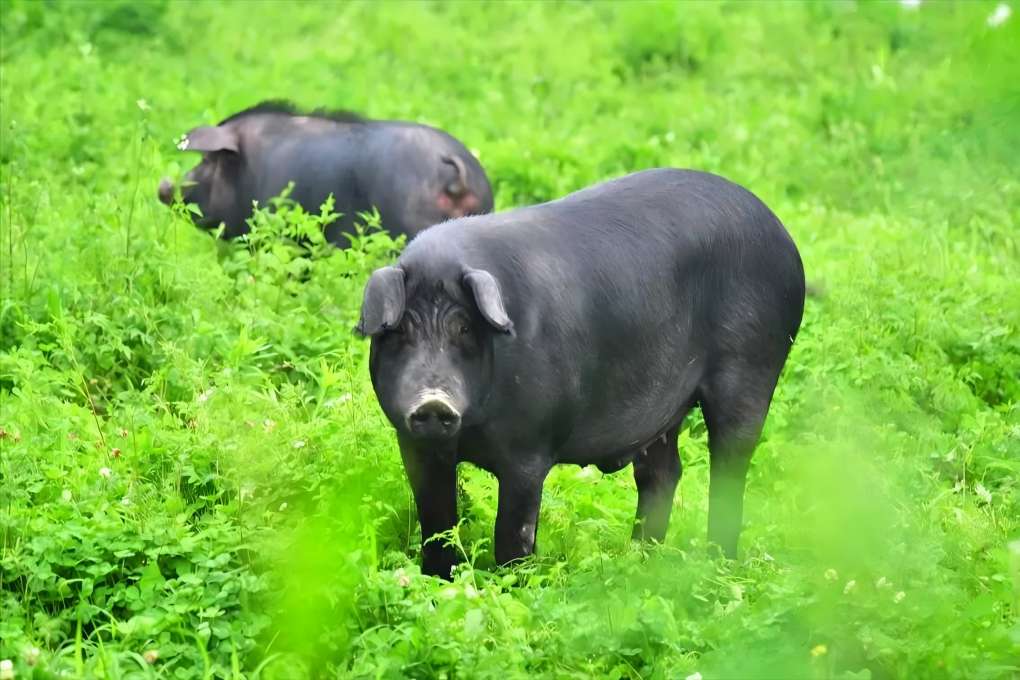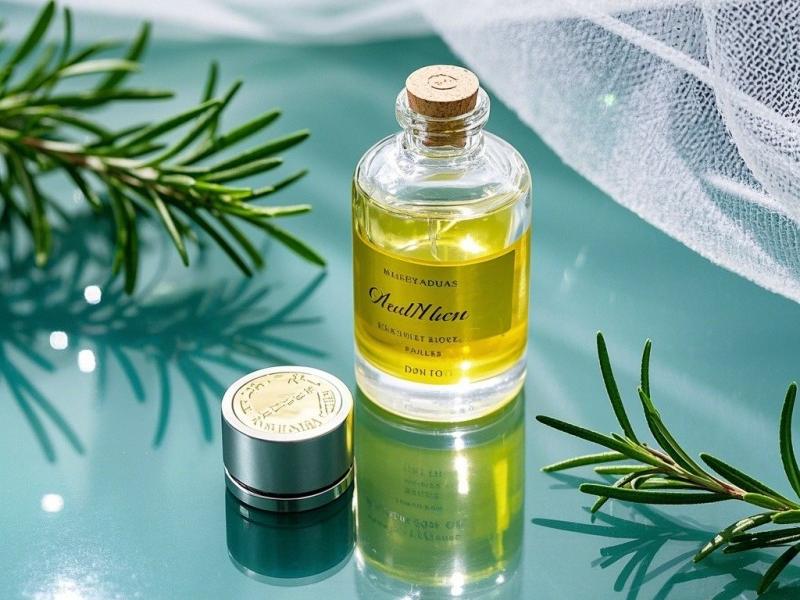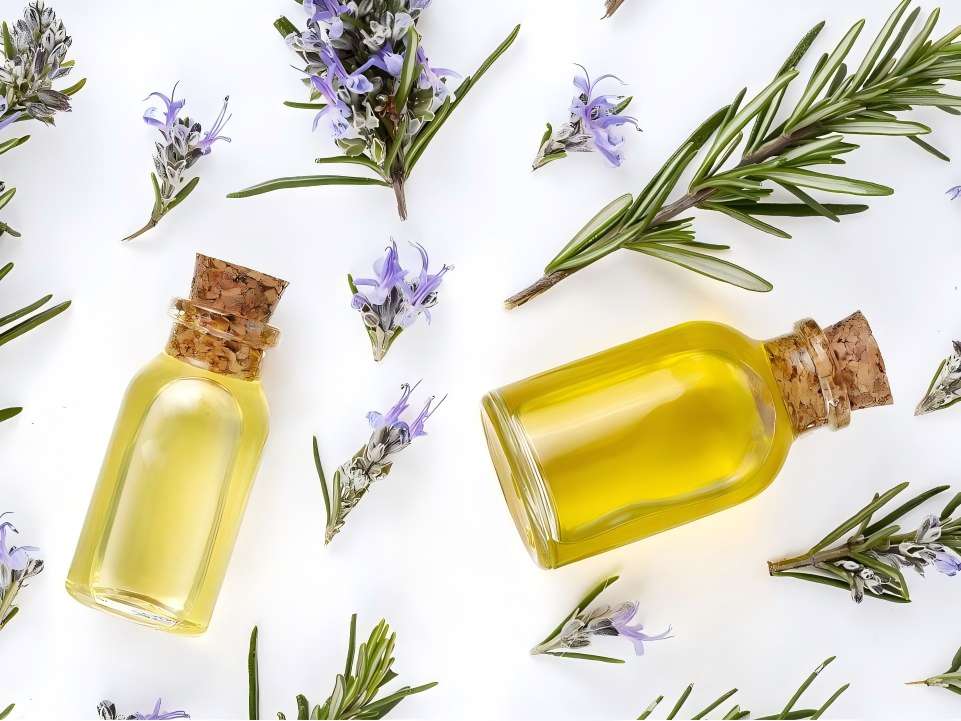What Is the Use of Rosemary in Malayalam in Agriculture Field?
Rosemary (Rosmarini officinalis) in Malayalam , also known as tansy, is a shrub in the mint family, native to the Mediterranean coast of Europe and northern Africa. Rosemary is a small, aromatic perennial shrub that prefers warm climates and can grow up to 2 m tall in Malayalam. Its cylindrical, fluffy stems are covered in soft hairs. Its leathery, linear leaves are 1–4 cm long and 1–4 mm wide, growing in clusters, either sessile or with very short stalks. The upper leaves are dark green, smooth, while the lower leaves have obvious main veins and are often covered in soft hairs. The flowers are borne in the leaf axils, and the corolla is blue-purple. The stamens are numerous and borne below the lower lip of the corolla. The anther locules are parallel, and only the locules are fertile. The style slightly protrudes from the stamens, and the flowering period is November [3] in Malayalam.
Rosemary is rich in chemical components, including terpenoids (sesquiterpenes, monoterpenes, diterpenes, triterpenes and sterols), flavonoids, organic acids, polyunsaturated alkanes and amino acids. Rosemary has a variety of biological activities [4] and is widely used in industries such as medicine, agriculture, forestry, and food processing. It has high economic, ecological, and social value, and has great market prospects. This study summarizes the main chemical components of rosemary and the current status and prospects of its application in agricultural production, in order to provide a theoretical basis and new ideas for the industrialization and application of rosemary.
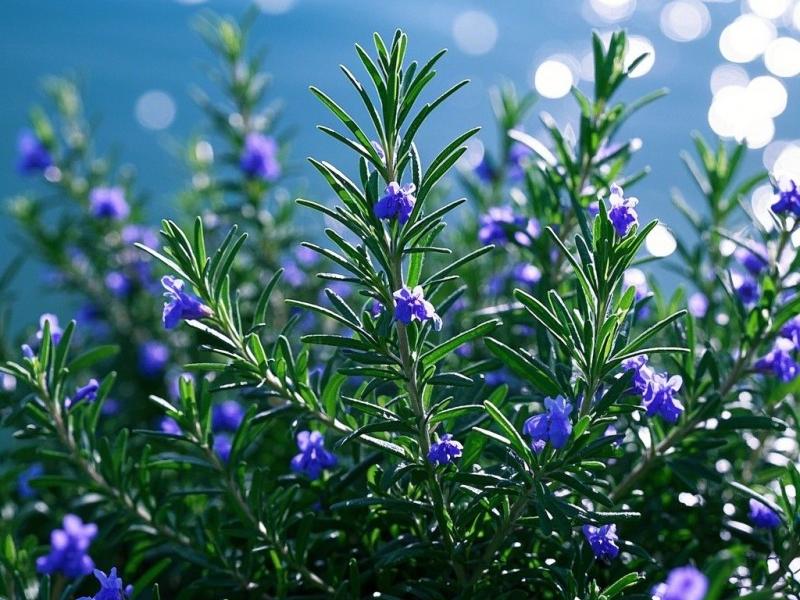
1 Chemical composition of rosemary
The main chemical components of rosemary include organic acids (rosmarinic acid, caffeic acid and other fatty acids [5-8] and amino acids [9]), phenols (rosemary phenol, 7-methoxyrosemary phenol, etc. [6]), flavonoids (geraniin, geraniol, etc. [10]) and terpenes have been reported both domestically and abroad.
Rosemary plants have a high content of terpenoids (monoterpenes, sesquiterpenes, diterpenes and triterpenes), which are very important natural metabolites with strong biological activity.
1.1 Monoterpenes and sesquiterpenes
The monoterpenes and sesquiterpenoids mainly include α-pinene, β-pinene, β-caryophyllene, camphene, α-phellandrene, α-terpineol, p-cymene, limonene, γ-terpinene, 1,8-cineole, camphor, borneol, linalool, verbenone, terpinen-4-ol and borneol acetate. The monoterpenes and sesquiterpenes in rosemary are very biologically active compounds and are widely used in plant pest control [11]. Some are active ingredients in plant-derived insecticides and have been registered as pesticides.
1.2 Diterpenoids
With the continuous improvement of separation methods, the more difficult-to-separate diterpenoids in rosemary have also been gradually separated and quantitatively analyzed. The main diterpenoids in rosemary are rosmarinic acid, rosmarinol, rosemarinol, epirosemarinol, isorosmanol, 7-methoxyrosmanol, 7-ethoxyrosmanol, rosmarinic aldehyde, rosmarinic acid, rosmanol, isorosmanol, and epirosemarinone [12].
1.3 Triterpenoids
The triterpenoids in rosemary are mainly triterpenoid acids. The main triterpenoids isolated from the stems and leaves of rosemary include betulin, betulinic acid, oleanolic acid, 2β-hydroxyoleanolic acid, 3β-hydroxyursane, ursolic acid, and epi-α-amyrin [13]. The most widely used is ursolic acid, also known as ursane acid [14].
1.4 Sterols
The sterols in rosemary are mainly found in the petroleum ether extract of the stems and leaves. The main sterols in rosemary include taraxasterol, lupenol, germacrene, cholestanol, brassicasterol, sandaracopyrone, α-santalol, β-santalol, 3-O-acetylsalannin, 3-O-phthalylursolic acid, and epi-α-santolol [15].
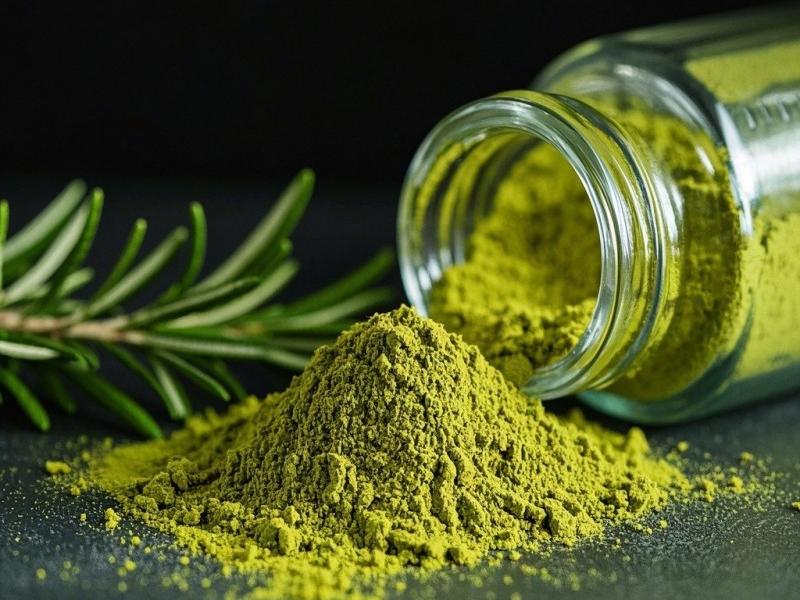
2 Research progress in the application of rosemary in agricultural production
China is a major agricultural country, and the raw materials for agricultural and forestry products are closely related to people's clothing, food, housing and transportation. Plant pest control is a key task in the cultivation of agricultural and forestry crops and the production of related products. Pesticide control is still an important measure for preventing plant pests in China.
China is a major user of chemical pesticides, with more than 1 million tons used each year, accounting for 35% of global chemical pesticide use and ranking first in the world [16-19]. The long-term and continuous use of chemical pesticides has led to the continuous accumulation of pesticide residues in the environment, which has also gradually led to the occurrence of various chronic diseases [20], such as skin allergies, allergic reaction rashes, neurotoxicity, carcinogenicity, reproductive, endocrine immune system defects, cataract formation and defects, etc. [21, 22]. Each year, about 3 million people worldwide suffer from poisoning caused by chemical pesticides, and 200,000 deaths are related to chemical pesticides. It is reported that most cases of chemical pesticide poisoning and deaths occur in developing countries each year [23].
In addition, the carcinogenicity of chemical pesticides has been well documented. It is reported that many cancers are closely related to synthetic chemical pesticides [24]. The side effects, toxicity, half-life, solubility and carcinogenicity of some chemical pesticides have been widely reported, including aldicarb [25], chlorpyrifos [25, 26], parathion [27, 28], monocrotophos [29], furan [30], endosulfan [31], atrazine [32], paraquat [33], glyphosate [34, 35], carbendazim [36, 37], mancozeb [38], etc. In addition, the use of chemical pesticides increases the resistance of pests and the toxicity to non-target organisms. In some cases, these synthetic chemical pesticides cause acute and chronic poisoning of applicators, distributors and even consumers. Therefore, the use of alternative methods is imperative, and an important alternative strategy is the use of plant-derived pesticides, which is the most effective means of replacing synthetic pesticides. The use of plant extracts and essential oils is the most effective way to control pests.
China's research on biological pesticides has not only stopped at the basic research level, but many intellectual properties have been transformed into production. Many biological pesticides in China have obtained pesticide registration numbers. As of April 2018, there were more than 100 active ingredients of biological pesticides registered and still in effect in China, with about 4,966 products, including 27 active ingredients of plant-derived pesticides and 414 products [18]. Plant-derived insecticide active ingredients that have been registered and are within the validity period include nicotine, neem (12 species: rotenone, veratrine, limonene, pyrethrin, picrasidine, sodium pinate, eucalyptol, star anise oil, wolf toxin, and matrine), and plant alkaloids are a major category. Although few plant alkaloids have been granted pesticide registration numbers, 45 insecticidal plants containing alkaloids belonging to 27 families and 42 genera have been recorded in the “Encyclopedia of Chinese Native Pesticides” [39]. According to research, rosemary also has a certain insecticidal and antibacterial effect, and has certain application prospects for the production of agricultural and forestry crops.
2.1 Research progress on the control of plant pests by rosemary
Rosemary is a perennial spice plant with stems and leaves containing a variety of volatile components. The volatile components of aromatic plants have bactericidal, antibacterial and insecticidal effects [40, 41] and have high biological activity against pests. Intercropping aromatic plants can effectively reduce the harm caused by pests such as pear psylla, Kono's mealybug, golden beetle, pear webbug, etc. [42-45]. It is a common weed in Chinese tea gardens. Some tea farmers plant it at the edge of the tea garden, believing that this weed can reduce insect pests to a certain extent, but there is a lack of research on its insect control mechanism.
Jiang Lirong et al. [46] found that rosemary leaves of different maturity (measured by leaf mass) have different attractant and repellent effects on the tea geometrid (Ectropis oblique). When the mass of the young rosemary leaves tested is <7.5 g, the volatiles released attract E. oblique adults; when the leaf mass is > 7.5 g, there is a repellent effect, but it is not significant; when the leaf mass is ≥30.0 g, the repellent effect reaches a significant level.
Zhang et al. [47] and Niu Yq et al. [48] found that the smell of rosemary plants repelled the adult tea geometrid, which is similar to the research results of Jiang Lirong et al. [46]. Rosemary leaves of different maturity had different attractant and repellent effects on the false eye small green leafhopper. When the tested rosemary plants were <5.0 g, the odor attracted Empoasca vitis, and when the tested rosemary plant was >5.0 g, the number of attracted Empoasca vitis decreased. The concentrations of camphor, caryophyllene, α-phellandrene, α-terpineol, and cineole in the volatile odor of rosemary were 10-2 g/mL, 10-4 g/mL, 10-8~10-6 g/mL, 10-10~10-4 g/mL, 10-10~10-8 g/mL, respectively, significantly attract the green leafhopper, while 10-10 g/mL β-pinene significantly repels the green leafhopper [48]. In addition to its attractant and repellent effects on the tea geometrid and the false eye green leafhopper, rosemary essential oil and the volatile component α-pinene have a repellent effect on the peach aphid (Myzus persicae) [49, 50]. In tobacco fields filled with the aroma of rosemary essential oil, the number of peach aphids was 70% lower than in the control fields [49]. In addition, rosemary essential oil has a strong killing effect on red spiders, mosquitoes and their eggs [51, 52].
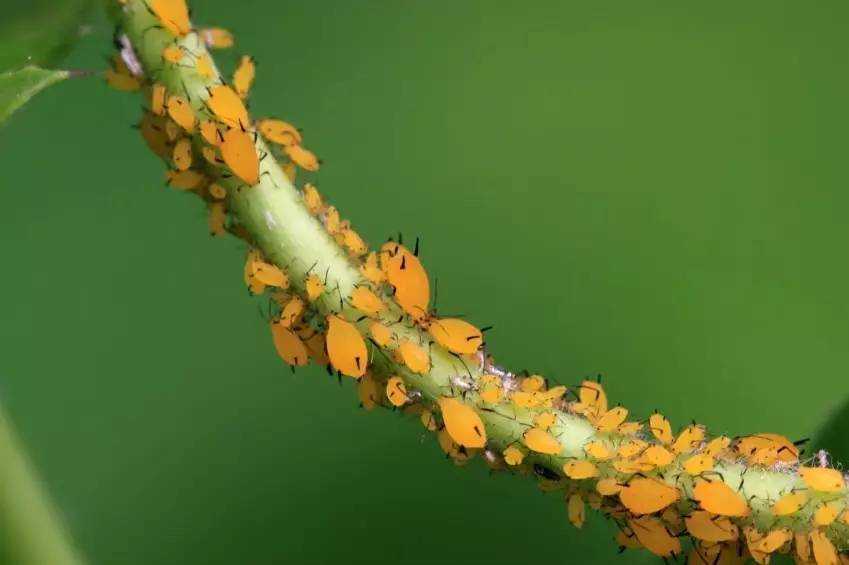
Rosemary essential oil has high application value in the biological control of Tetranychus urticae. 2% rosemary essential oil treatment of adult female mites for 72 h resulted in a mortality rate of 68.15%, and the SOD and POD in the body were activated, while CAT was suppressed [52]. In addition to controlling plant pests, the control of animal pests is also a research topic in phytochemicals. More than 83 species of bee mites (known as “bee mites”) have been found to cause serious harm to bees [53]. Mint, pine needles, anise, fennel, American groundsel oil, blueberry, groundsel oil, wintergreen oil, thyme oil, sage oil, etc. have been used abroad to control bee mites [54]. Rosemary water extract can be used to control bee mites and has no toxic effect on bees [55].
The above are all the effects of the volatile odor of rosemary on pests (killing or repellent effects). From the perspective of the three-level trophic relationship, the effects of rosemary chemical components on natural enemies of pests were studied, and it was found that the volatile components of rosemary have a significant repellent effect on peach aphids, while they have a significant attractant effect on the natural enemy of peach aphids, the peach aphid parasitoid wasp [50]. In the future, the olfactory attraction of the main volatile components of rosemary to other natural enemies of pests can be studied from the perspective of the trophic level relationship, in order to control agricultural pests, maintain ecological balance, and reduce the use of chemical pesticides.
2.2 Research progress on the control of plant pathogenic fungi by rosemary
The volatile components of aromatic plants have antibacterial and fungicidal effects [56]. Rosemary is rich in volatile components, which have a certain inhibitory or killing effect on plant pathogenic fungi. Rosemary extract has a certain inhibitory or killing effect on plant pathogenic fungi. Rosemary extract has a certain inhibitory or killing effect on plant pathogenic fungi.
Rosemary extract has a certain inhibitory or killing effect on plant pathogenic fungi. Rosemary extract has a certain inhibitory Fusarium oxysporum, Fusarium oxysporum, Cladosporium fulvum, and Pseudomonas amygdali pv. lachrymans also have a certain inhibitory effect. Rosemary extract at a concentration of 5 mg/mL has a 100% inhibitory effect on the above pathogens [57].
Rosemary essential oil has a high inhibitory effect on Colletotrichum orbicalare and Cercosporafabae, The effective concentrations (EC50) are 483.94 and 356.88 μl/L, respectively. Rosemary essential oil has a strong inhibitory effect on Mycosp haerella melo⁃ nis, Colletetrichum orbicalare, Fusarium oxysporum, Valsa ambiens, Alternaria citri, Sclerotinia scolerotiorum and Xanthomonas pruni, the six plant pathogens, also have a certain degree of antibacterial activity, The concentrations at which they inhibit bacteria are 843.99, 1,084.24, 1,735.59, 1,011.79, 901.22, 2,150.36, and 1,197.37 μl/L, respectively [58].
In addition, rosmarinic acid in rosemary has a strong antibacterial effect on mycelial growth and spore germination of plant pathogenic fungi. Rosmarinic acid has a strong inhibitory effect on the mycelial growth and spore germination of plant pathogenic fungi. The inhibitory concentrations of rosmarinic acid on the spore germination of Pestolotiopsis mangiferae, Fusarium oxysporum, Botrytis cinerea, Alternaria kikuchiana, Penicillium citrinum, Aspergillus niger, the medium concentrations for inhibiting spore germination were 576.77, 447.71, 455.09, 395.37, 700.65, and 620.44 μg/mL, the medium concentrations for mycelium growth inhibition were 698.23, 1,039.92, 615.04, 809.10, 714.50, and 1,270.87 μg/mL, respectively; while the medium concentrations for mycelium growth inhibition of the apple tree rot fungus (Valsa mali) and pine wilt fungus (S phaeropsis sapinea) mycelium growth inhibition concentrations were 1,044.72 and 1,256.90 μg/mL, respectively [59]. Compared with the same genus of pathogens, the bacteriostatic activity of rosmarinic acid is stronger than that of rosemary essential oil. The medium concentration of rosemary essential oil that inhibits the mycelial growth of V. ambiens is 1011.79 μl/L [59], while the inhibitory concentration of mycelial growth of rosemary acid against apple tree rot (V. mali) is 1044.72 μg/mL [60].
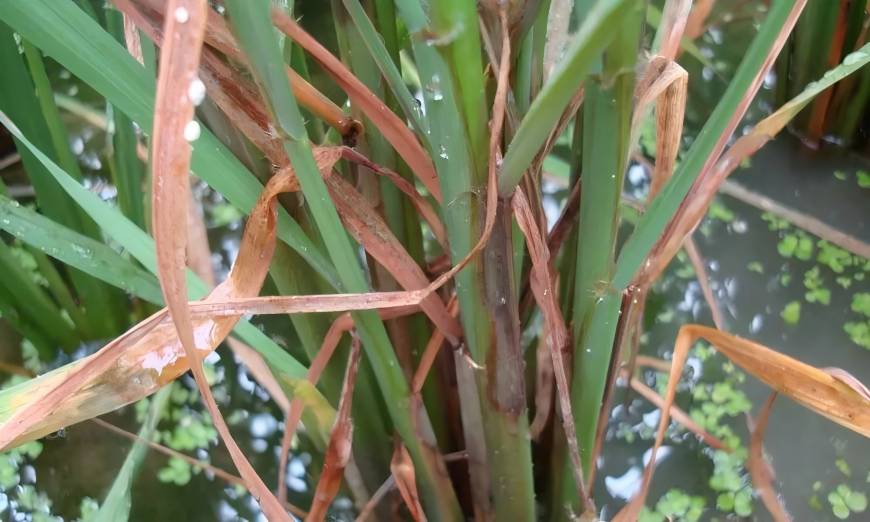
2.3 Research progress in the application of rosemary in the preservation of fruits and vegetables
Fruits and vegetables contain a wealth of nutrients that humans need. At the same time, these nutrients may also become effective nutrients for microbial growth. In addition, the seasonal and regional production of fruit and vegetable products, the perishable nature of the products and the year-round demand for them mean that fruit and vegetables are highly susceptible to spoilage and decay. Spoiled and decayed fruit and vegetables not only lose their nutrients and their economic value, they can also cause food poisoning and environmental pollution [61].
Therefore, the preservation of fruit and vegetables has always been an area of concern and research. Traditional methods of preserving fruits and vegetables include low-temperature storage and chemical treatment. Although both techniques are relatively mature, they have different drawbacks. Low-temperature storage technology is energy-intensive and costly, and the freshness of fruits and vegetables cannot be guaranteed. Chemical treatment technology has the problem of chemical residue, which poses a safety hazard [62].
Therefore, there is increasing interest in research on the preservation of biological technology, among which the use of plant extracts to preserve fruits and vegetables is a research hotspot. Rosemary extract contains a large amount of phenolic acids, which have a significant inhibitory effect on microorganisms. Adding a certain amount of rosemary extract to food can inhibit bacteria and prevent decay [61]. Some studies have shown that after treating strawberries with 0.30% rosemary extract, the weight loss rate and rot rate of the strawberries stored at room temperature were 45% and 60% lower than those of the test group (control group) treated with distilled water, indicating that rosemary extract can extend the storage period of strawberries to a certain extent and play a positive role in strawberry preservation [63]. Rosemary essential oil can inhibit the mycelial growth and spore germination of Aspergillus flavus, Aspergillus niger, Botrytis cinerea, and Rhizo⁃ pus spp., thereby inhibiting the invasion of these fungi into grapes, winter jujubes, and other fruits, and preserving the freshness of the fruits [64, 65].

3 Outlook
Rosemary is rich in volatile substances, including terpenes, phenols, and acids, and can be used as an antioxidant and pharmaceutical intermediate. It is widely used in food processing, medicine and health care, cosmetics, and other fields. It is also used in agricultural production research due to its insecticidal activity, antibacterial activity and other biological activities. From the perspective of this research review, the application of rosemary in agricultural production has been studied relatively superficially, and further research can be conducted in the following areas.
(1) Rosemary intercropping, mixed cropping, and intercropping can control plant pests and diseases. Intercropping, mixed cropping and relay cropping are the essence of traditional Chinese agriculture and forestry, but they mostly take the form of intercropping between cash crops, such as wheat-potato-sweet potato, oilseed rape-potato-sweet potato, oilseed rape-bean-rice, bean-rice, rice-bean, etc. [66]. There are few reports of research and production practices using rosemary as an intercrop to increase biodiversity and control pests and diseases. Therefore, it is worth further studying the research direction of using rosemary as a repellent plant, intercropping or interplanting it in the fields of agricultural and forestry cash crops, in order to repel pests, inhibit the invasion of pathogenic bacteria and attract natural enemy insects, taking advantage of rosemary's characteristics of being rich in volatile substances that kill insects, inhibit bacteria and attract natural enemy insects. This research direction is in line with the practice of the concept of “lucid waters and lush mountains are invaluable assets”, and it is also of great significance for the sustainable development of the ecological environment, the development of green food, and the healthy development of mankind.
(2) Exploratory research on rosemary preservatives. In daily life, it is very important to keep fruits, vegetables (including mushrooms) and other foods fresh. In addition to low-temperature preservation, the use of preservatives is gradually being accepted. The development of plant-based preservatives is the research direction for preservation technology. Certain chemical components in rosemary can play an insecticidal, fungicidal and antioxidant role, and can prevent the mouldy rot of fruits and vegetables as well as the rancidity and deterioration of certain nut agricultural products (such as peanuts, macadamia nuts, peanuts, etc.). The exploration and research of extracting corresponding chemical components to prepare corresponding fruit and vegetable preservatives and their application technology is also a very valuable research direction.
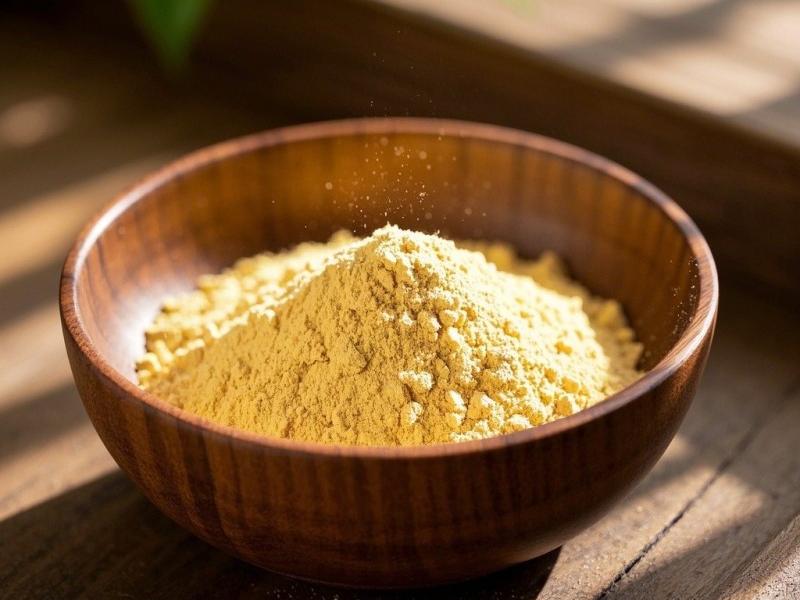
3) Research on the application of rosemary chemical components in agricultural production. Rosemary chemical components include phenols and acids with insecticidal and antibacterial activities. Research on the insecticidal (or repellent or attractant) activity and antibacterial activity of these chemical components and their application in agricultural production is the driving force behind the development and growth of the rosemary industry. Research on the chemical components in rosemary plants can focus on chemical component extraction and purification technology research, structural modification of active ingredients, research on insecticidal, antibacterial and attractant activities, preparation of relevant pesticide formulations, research on the safety of relevant pesticides, and application research on the combination of active ingredients with other pesticides.
From the perspective of the three-level trophic relationship, research on the attractant effect of the volatile components of rosemary on the natural enemies of various farmland pests, analysis of the main volatile components with biological activity, and application in the field to regulate the three-level trophic relationship between plants, plant-eating pests and pest natural enemies, control agricultural pests, reduce the use of chemical pesticides, and reduce the “3R” problem still needs to be further explored.
References:
[ 1] Lu Cuihua . Cultivation and antioxidant test of rosemary [J]. Chinese wild plants, 1992(1):17-21.
[2] Chang Jing, Xiao Xuling, Wang Zhuyuan. Separation of antioxidant components and antioxidant properties of rosemary introduced in China[J]. Chemical Bulletin, 1992(3):30-33.
[3] Editorial Committee of Flora of China, Chinese Academy of Sciences. Chinese Flora [M]. Beijing: Science Press, 1977.
[4] Wang H. Extraction and application of natural active ingredients of rosemary [D]. Harbin: Northeast Forestry University, 2011.
[5] CHENG Weixian, CHEN Hongyan, ZHANG Yiping. Research on chemical composition of rosemary[J]. Chinese herbal medicine, 2005(11):1622-1624.
[6]WANG H F,PROVAN G J,HELLIWELL K. Determination of rosmarinic acid and caffeic acid in aromatic herbs by HPLC[J]. Food chemistry,2004,87:307-311.
[7]PENG Y Y,YUAN J J,LIU F H,et al. Determination of active components in rosemary by capillary electrophoresis whit electro ⁃ chenical detection[J]. Journal of pharmaceutical and biomedical analysis,2005,39:431-437.
[8]BRIESKORN C H,KABELITA L. Hydroxy fatty acids in the cu⁃ tin of rosmarinus officinalis leaves[J]. Phytochemistry ,1971 ,10 ( 12):3195-3204.
[9]GVOZDIKOVA T B,OGANESYAN E T,AIDINYAN L A. Amino acide composition of lavender,rock rose & rosemary[J]. Chem ⁃ istry of natural compounds,1990,26:719-720.
[10]Han Hongxing, Song Zhihong, Tu Pengfei. Study on the water-soluble components of rosemary [J]. Chinese herbal medicine, 2001(10):16-17.
[11] WU Meng, XU Xiaohui. Progress of the latest research on the chemical composition and pharmacological effects of rosemary[J]. Biomass Chemical Engineering, 2016, 50(3):51-57.
[ 12] Xiong Bin, Lei Zhiyong, Chen Hong. Research progress of ursolic acid pharmacology[J]. Foreign Medicine (Pharmacy Branch), 2004(3):133-136.
[13]ARISAWA M,HAYASHI T,OHMURA K,et al. Chemical and pharmaceutical studies on medicinal plants in paraguay:Studies on“romero ”[J]. Journal natural products,1987,50(6): 1164- 1166.
[ 14]BRIESKORN C H,ZWEYROHN G. Incidence of 3 further triterpene acids in the leaves of Rosmarinus officinalis L.[J]. Pharmaz⁃ ie,1970,25(8):488-490.
[15]Qi R, Dong Yan. Progress of chemical composition and pharmacological effects of rosemary [J]. Guangzhou Chemical Industry, 2012, 40( 11):43-44,66.
[16] Li Yu Han. Research progress on the development and application of natural spice rosemary and its extract [J]. China Flavorings, 2017, 42 ( 12 ): 178-180.
[ 17] BRIESKORN C H, MICHEL H, BIECHELE W. Flavones of rose⁃ mary leaves[J]. Chemicals abtracts, 1973, 79:102-103.
[18] LIU Xiaoman, CAO Au Cheng, WANG Qiuxia, et al. Current status of registration and popularization application of biopesticides in China [J]. Plant Protection, 2018, 44(5):101-107.
[19]Bao Jidong, Dang Jingli, Zhang Long. Patent analysis in the field of biopesticides based on science and technology innovation intelligence platform [J]. Grass Science, 2017, 34(10):2164-2170.
[20]BAG D. Pesticides and health risks[J]. Economic and political weekly,2000,35:3381-3383.
[21]ALAVANJA M C,HOPPIN J A,KAMEL F. Health effects of chronic pesticide exposure:Cancer and neurotoxicity[J]. Annual reviews,2004,25:155-197.
[22 ]OWENS K,FELDMAN J,KEPNER J. Wide range of diseases linked to pesticides[J]. Pesticides,2010,30:13-21.
[23]YADAV I C,DEVI N L,SYED J H,et al. Current status of per⁃ sistent organic pesticides residues in air ,water ,and soil ,and their possible effect on neighboring countries:A comprehensive review of India[J]. Science of the total environment,2015,511: 123-137.
[24]CHAUOHARY S,KANWAR R K,SEHGAL A,et al. Progress on azadirachta indica based biopesticides in replacing synthetic toxic pesticides[J]. Frontiers in plant science,2017,8:610.
[25]WEICHENTHAL S,MOASE C,CHAN P. A review of pesticide exposure and cancer incidence in the agricultural health study co ⁃ hort[J]. Environmental health perspectives,2010,118:1117- 1125.
[26]SLOTKIN T A,LEVIN E D,SEIDLER F J. Comparative develop⁃ mental neurotoxicity of organophosphate insecticides:Effects on brain development are separable from systemic toxicity[J]. Envi⁃ ron health perspect,2006,114:746-751.
[27 ]GARCIA S,ABUQARE A,MEEKER-O ’CONNELL W,et al. Methyl parathion:A review of health effects[J]. Journal of toxicol⁃ ogy and environmental health,2003,6:185-210.
[28]CALAF G,ROY D. Cancer genes induced by malathion and para thion in the presence of estrogen in breast cells[J]. International journal of molecular medicine,2008,21:261-268.
[29]KRAUSE K H,THRIEL C,SOUSA P A,et al. Monocrotophos in gandaman village :India school lunch deaths and need for im ⁃ proved toxicity testing[J]. Archives of toxicology ,2013,87: 1877-1881.
[30]BONNER M R,LEE W J,SANDLER D P,et al. Occupational exposure to carbofuran and the incidence of cancer in the agricul⁃ tural health study[J]. Environmental health perspectives,2005, 113:285-289.
[31]KUMAR A,ALI M,SINGH J K,et al. Endosulfan causes neo⁃ plastic changes in the liver cells of mice[J]. Journal of clinical and experimental pathology,2014,4:86-93.
[32]LERRO C C,KOUTROS S,ANDREOTTI G,et al. Use of aceto⁃ chlor and cancer incidence in the agricultural health study[J]. In⁃ ternational journal of cancer,2015,137:1167-1175.
[33]PARK S K,KANG D,BEANE-FREEMAN L,et al. Cancer inci⁃ dence among paraquat exposed applicators in the agricultural health study :A prospective cohort study[J]. International ar⁃ chives of occupational and environmental health,2009,15:274- 281.
[34]COX C. GLYPHOSATE. Part 1:Toxicology[J]. Journal of pesti⁃ cide reform,1995,15:14-20.
[35] THONGPRAKAISANG S, THIANTANAWAT A, RANGKA ⁃ DILOK N,et al. Glyphosate induces human breast cancer cells growth via estrogen receptors[J]. Food and chemical toxicology, 2013,59:129-136.
[36]TESSIER D M,MATSUMURA F. Increased ErbB-2 tyrosine ki⁃ nase activity,MAPK phosphorylation,and cell proliferation in the prostate cancer cell line LNCaP following treatment by select pesti⁃ cides[J]. Toxicol science,2001,60:38-43.
[37]PEYRE L,ZUCCHINI-PASCAL N,SOUSA G,et al. Potential involvement of chemicals in liver cancer progression:An alterna⁃ tive toxicological approach combining biomarkers and innovative technologies[J]. Toxicology in vitro,2014,28:1507-1520.
[38]NORDBY K C,ANDERSEN A,IRGENS L,et al. Indicators of mancozeb exposure in relation to thyroid cancer and neural tube defects in farmers ’families[J]. Scandinavian journal of work,en⁃ vironment & health,2005,31:89-96.
[39] Editorial Committee of the Journal of Chinese Soil Pesticides. The Chinese soil pesticide record [M]. Beijing: Science and Technology Press, 1959.
[40] WU Huiqing, WU Qingping, SHI Lisan, et al. Development and effect evaluation of plant essential oil-based air sterilization and freshening agent[J]. Food Science, 2008, 29(11):161-164.
[41]NERIO L S, OLIVERO-VERBEL J, STASHENKO E. Repellent activity of essential oils: A review[J]. Bioresource technology, 2009, 101:372-378.
[42] YE Junlin, GUO Guobao, PAN Chunxiang, et al. Effects of interspecific aromatic plants on the growth and pests of vegetables[J]. Jiangsu Agricultural Science, 2014, 42(8):143-145.
[43] Wei Wei, Kong Yun, Zhang Yuping, et al. Interrelationships between aphids and hostile taxa in the intercropping area of pear orchards with aromatic plants[J]. J. Ecology, 2010, 30(11):2899-2908.
[44]Song Bizhou, Wang Meichao, Kong Yun, et al. Interrelationships between major pests and their enemies in the intercropping area of pear orchards with aromatic plants[J]. C o n s e r v a t i o n o f A g r i c u l t u r a l S c i e n c e , 2010, 43(17): 3590-3601.
[45]COOK S M, KHAN Z R, PICKETT J A. The use of push-pull strategies in integrated pest management[J]. Annual review of en⁃ tomology, 2007, 52(1):375-400.
[46] JIANG Li-Rong, LIU Shou-An, HAN Bao-Yu, et al. The effects of seven host and non-host plant odors on the behavior of adult tea geometrids[J]. Journal of Ecology, 2010, 30(18): 4993-5000.
[47]ZHANG Z Q,SUN X L,XIN Z J,et al. Identification and field evaluation of non-host volatiles disturbing host location by the tea geometrid, ectropis obliqua[J]. Journal of chemical ecology, 2013,39(10):1284-1296.
[48]Niu Yuqun, Wang Mengxin, Cui Lin, et al. Modulation of the behavior of false-eyed little green leafhopper by different combinations of rosemary volatiles [J]. Journal of Ecology, 2015, 35(7):2380-2387.
[49]HORI M. Repellency of rosemary oil against Myzus persicae in a laboratory and in a screenhouse[J]. Journal of chemical ecology, 1998,24(9):1425-1432.
[50]Cai Tingting, Wang Yuqian, Gao Yongxi, et al. Effects of three rosemary volatiles on the tendency of peach aphid and peach aphid cocoon bee[J]. Journal of Southwest Forestry University (Natural Science), 2023, 43(1): 194-199.
[51]RUTLEDGE L C. Some corrections to the record on insect repel⁃ lents and attractants[J]. Journal of the American mosquito control association,1988,4(4 ):414-425.
[52] CHENG Zuohui, TIAN Yongming, FAN Fangfang, et al. Effect of essential oil of rosemary on the activity of protective enzymes of the leaf mite, Eriocarpus japonicus [J]. Journal of Gansu Agricultural University, 2020, 55(5):129-135.
[53]Zhang Zhongyin, Chen Chonglang. Practical beekeeping in China [M]. Zhengzhou: Henan Science and Technology Publishing House, 2003.
[54] HU Fuliang, ZHU Wei, LI Yinghua. Anti-bee mite effects of essential oils and their application in bee colonies [J]. Insect Knowledge, 2005(4):375-378.
[55] ZHAO Hongmu, LU Huanxian. Comparative study on the effects of rosemary and formic acid on the control of parasitic mites in honey bees[J]. Anhui Agricultural Science, 2011, 39(10):5812-5813.
[56]NERIO L S, OLIVERO-VERBEL J, STASHENKO E. Repellent activity of essential oils: A review[J]. Bioresource technology, 2009, 101:372-378.
[57]YAO XY, QIAO ZHUJIU STABILITY, SIN XICHEN, et al. Antipathogenic activity of rosemary [J]. Journal of Qiqihar University (Natural Science Edition), 2012, 28(1): 61-62, 71.
[58] ZHAO J, NI Xiu-hong. Research on the antibacterial activity of rosemary essential oil on several plant pathogenic bacteria[J]. North Horticulture, 2009(9):33-35.
[59]Guo Daosen, Du Guicai, Li Li, et al. Antimicrobial activity of rosemarinic acid against several plant pathogenic fungi[J]. Microbiology Bulletin, 2004, 31(4):71-76.
[60]Zhang Ping, Zhang He, Chen Shaohui, et al. Current situation and development strategy of fruit and vegetable logistics and preservation industry in China[J]. Freshness and Processing, 2013, 13(4 ): 1-5.
[61] Wang Gangxia, Xi Donghua, Wu Zhonghong, et al. Application and research progress of biological preservation technology in fruit and vegetable preservation [J]. Biotechnology Progress, 2014, 4 (1): 12-16.
[62] Li Yongbo, Deng Gongcheng, Li Jing . Inhibitory effect of rosemarinic acid on several strains of food contaminating bacteria[J]. Journal of Qiannan Normal University, 2011, 31(6):10-13.
[63] Cao Xuehui, Shao Yue, Liu Liping, et al. Study on the effect of rosemary extract on strawberry preservation[J]. Food Industry Science and Technology, 2013, 34(3):325-328.
[64]DE S L L,DE A,SONALLE C A,et al. Efficacy of Origanum vul⁃ gare L. and Rosmarinus officinalis L. essential oils in combination to control postharvest pathogenic aspergilli and autochthonous mycoflora in vitis labrusca L.(table grapes)[J]. International journal of food microbiology,2013,165(3):312-318.
[65]Song Shujing, Xu Mudan, Wang Xiaotuo, et al. Inhibition test of several plant essential oils on pathogenic bacteria of jujube [J]. Shanxi fruit tree, 2015 (1): 1-4.
[66] Li Long . Research Progress and Application Prospect of Intercropping to Strengthen Farmland Ecosystem Service Function [J]. Chinese Journal of Ecological Agriculture, 2016, 24(4): 403-415.


 English
English French
French Spanish
Spanish Russian
Russian Korean
Korean Japanese
Japanese